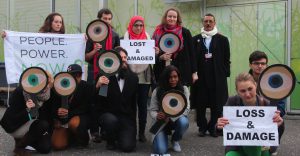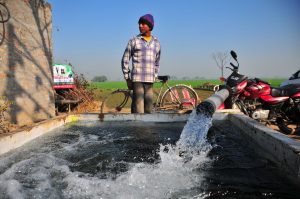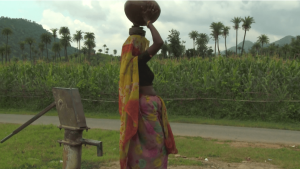In heading up two new multilateral financial institutions, China is expanding its role as a leader in both geopolitics and international finance. Both the New Development Bank (NDB, commonly known as the BRICS Development Bank) and Asia Infrastructure Investment Bank (AIIB) have sought to assure the public that they will uphold sustainable finance standards, while differentiating themselves from traditionally Western multilateral lenders.
Incoming head of the AIIB, Jin Liqun, has promised that the institution will be “clean, lean and green” (free of corruption, efficient and sustainable). But whether these institutions will truly live up to their sustainable finance promises is largely a matter of Chinese leadership and what they ultimately choose to fund. So far, neither the AIIB nor the NDB has ruled out investment in coal-fired power.
China has carved out a prominent role in international finance in recent years, becoming the single biggest lender to Latin America
Civil society groups from BRICS and other countries likely to be impacted by the NDB’s investments are concerned about the bank’s green credentials and yesterday published an open letter urging it to include robust social and environmental standards in its policy framework.
Both institutions have prioritised financing for infrastructure (the NDB’s Articles of Agreement specifies that its purpose is to “mobilise resources for infrastructure”), a sector whose mega-projects are not only prone to corruption but also to high environmental and social risks. This makes the need for upholding “clean and green” standards all the more urgent – and challenging.
Although it remains unclear to what extent the NDB will invest in Latin America, analysts have estimated that the region will need an additional US$ 320 billion per year to bridge its “infrastructure gap,” and it is likely that the bank will play a part.
China has carved out a prominent role in international finance in recent years, becoming the single biggest lender to Latin America, where it is expected to invest a further $250 billion in the next 10 years. The environmental and social track record of those investments, like that of all foreign investment, has been mixed. Some Chinese investors have “shown an ability to exceed local standards”, while researchers have also found that Chinese trade and investment in Latin America have become major drivers of environmental degradation and social conflict.
The new banks in town
Formally established in July, the NDB has now opened an office in Shanghai, and is supposed to be issuing loans by April 2016. However, the bank has not released any information regarding the status or development of its internal or governance policies, and has said nothing to date about how it intends to integrate environmental and social considerations into its lending process. In their letter, signatories faulted the bank for lining up projects despite the fact that no policies or procedures have yet been established to appropriately vet any financial, environmental, and social risks.
The fact that the NDB has remained so inaccessible (they only provide one general email address on their website, and no phone, fax, or even mailing address) does not bode well for the chances of it developing strong environmental and social financing standards, whereas every other multilateral finance agency has required robust civil society engagement.
In contrast, the AIIB, formally established in June, released a draft environmental and social policy framework and underwent a process of public consultations in September and October this year – albeit with serious flaws. Aiming to be open for business by the end of 2015, the AIIB’s goal is clearly ambitious, yet more likely to occur compared to the NDB, which appears to be stalling.
China can lead on sustainability standards
NGOs hope that these new banks can help to advance sustainability and China has a surprisingly great deal of experience in this regard. China’s urgent environmental health crisis led to Chinese authorities harnessing the power of the financial sector to “put teeth” into domestic environmental protection efforts. Since at least 2007, regulators have instituted green credit policies which require banks to consider environmental impacts in their lending.
For instance, an early set of policies required banks to curb lending to high energy intensive and highly polluting industries like steel and iron, coal, and others. Another example was the creation of a “credit blacklist”, in which companies with subpar environmental records were barred from receiving any bank loans. These kinds of policies led Chinese banks to start assessing and categorising their loan portfolio according to a project’s environmental impacts.
Perhaps China’s most famous policy is the Green Credit Guidelines, which require banks to deny credit to clients with poor environmental and social performance, and suspend or terminate any credit funds if “major risks and hazards” are found in a project. The revised 2012 version of the policy even required Chinese banks to abide by international practices and norms when investing abroad, something which, in contrast, not even US and European governments require of their banks. The Green Credit Guidelines have since become a cornerstone of the Chinese banking sector, with the government developing legal instruments and regulatory support to establish a “green financial system”. Although promoting the full implementation and potential of relatively new policies like the Green Credit Guidelines remains a major challenge, the direction China has taken in tying credit to environmental performance is still undoubtedly positive.
Southern countries will have to collectively work together to show that they can take the lead in advancing more equitable, transparent, and sustainable development finance.
Thus, China has the potential to expand the reach and example of its domestic green credit policies, but it does not yet seem to be bringing its green finance standards or experience to either the NDB or AIIB. For China to ignore its own experiences is to miss an opportunity to provide much-needed leadership on an international level.
On the other hand, as China assumes more responsibility as a global leader through new institutions like the NDB and AIIB, it will also have to prove that it is willing and able to work with all kinds of stakeholders, not just government or industry groups. While the Chinese government has gained praise for promoting sustainable finance policies, Chinese banks themselves have been gaining an international reputation for being inaccessible, particularly for communities who are negatively impacted by their lending. This has also negatively impacted China’s reputation abroad, and has compounded community concerns that Chinese banks are ambivalent about the well being of host country environments and communities.
Of course, Chinese leadership alone will not be enough to ensure that the NDB and AIIB establish high environmental and social financing standards. Southern countries will have to collectively work together to show that they can take the lead in advancing more equitable, transparent, and sustainable development finance.
China’s domestic experience offers just one reference point in understanding new models in sustainable development, but efforts from Brazil, Russia, India, and South Africa should be also considered. If the NDB and AIIB are to become respected international financiers, they will need to create a dynamic where South-led banks work to promote a race to the top in international standards rather than a race to the bottom.








